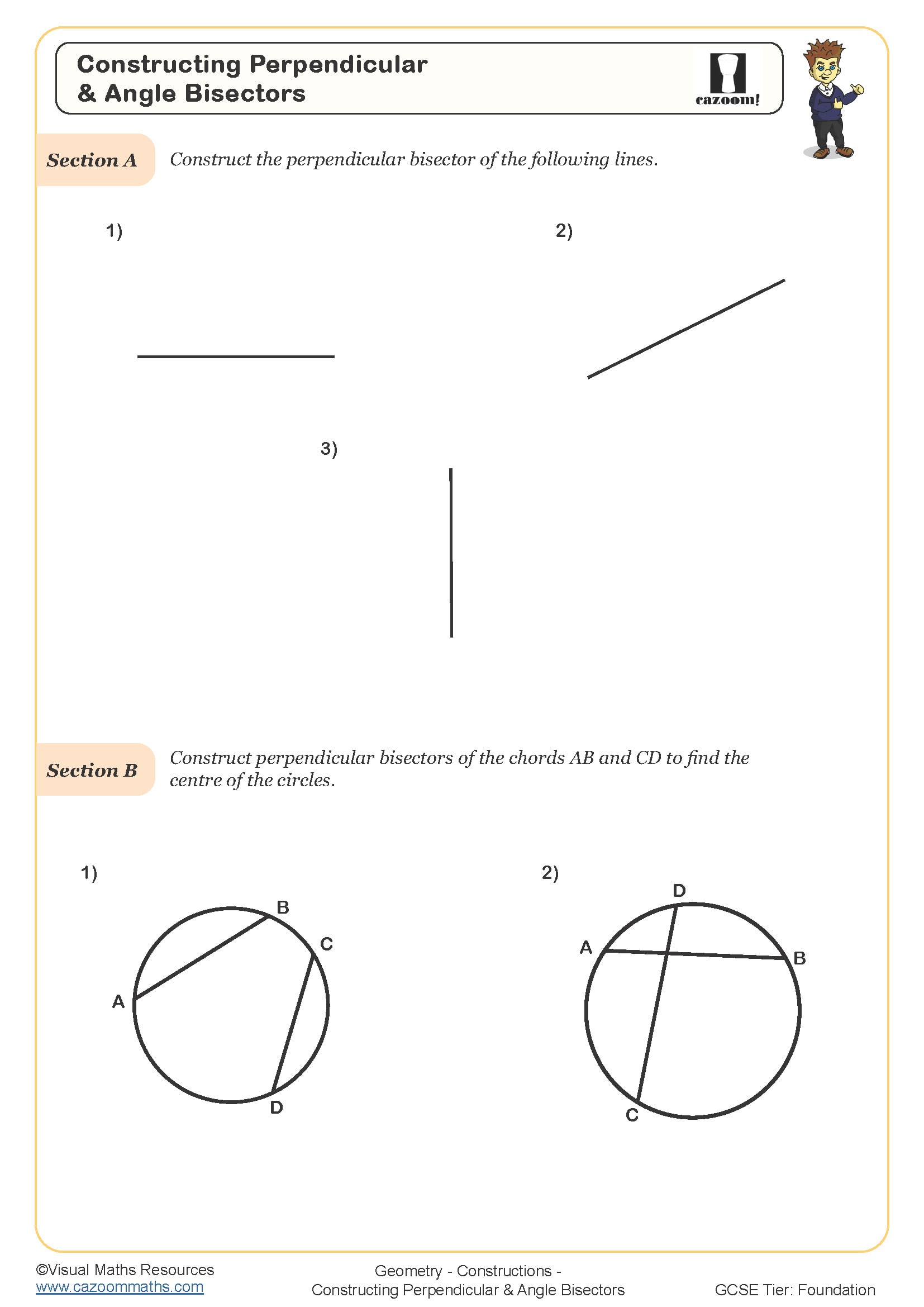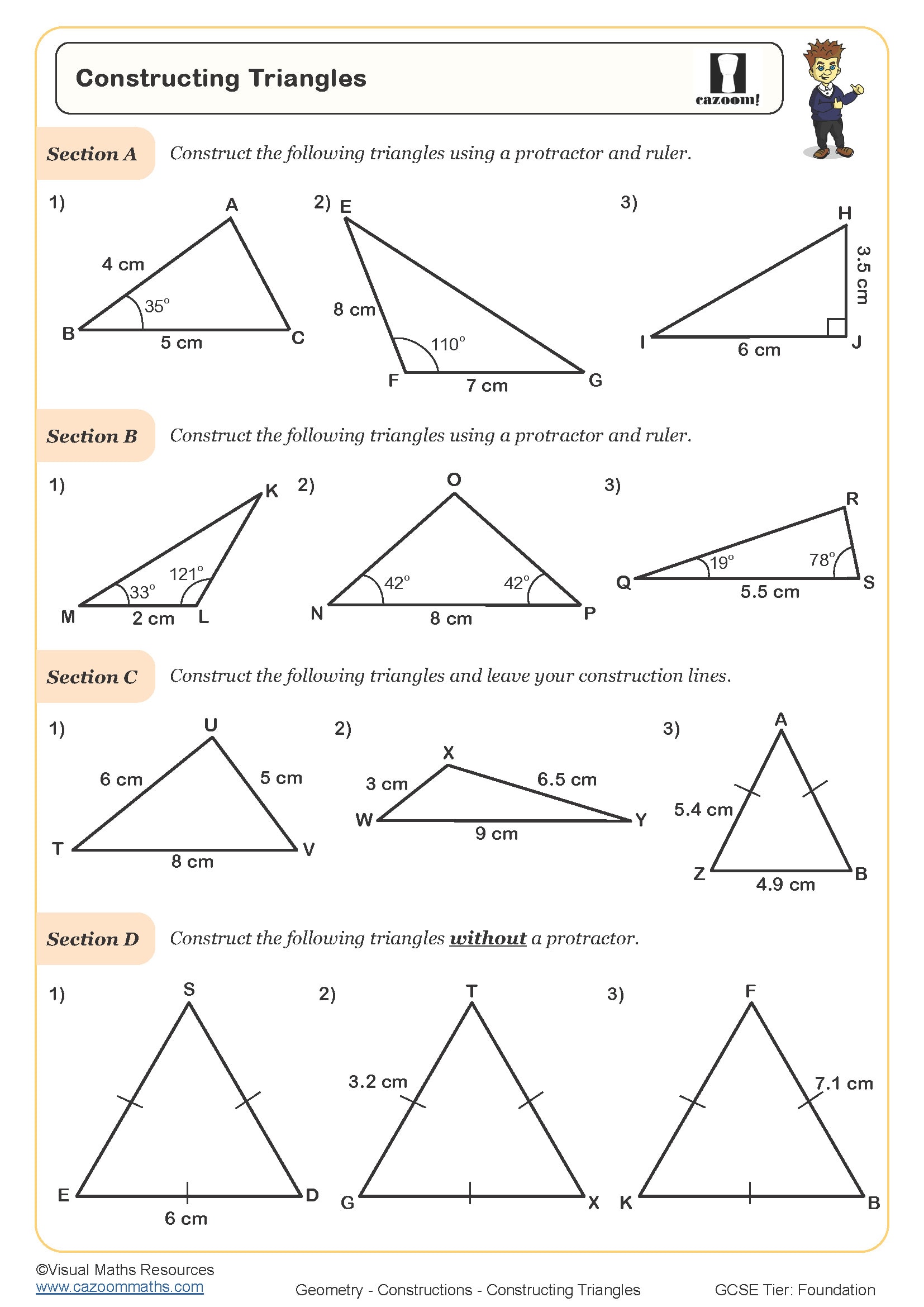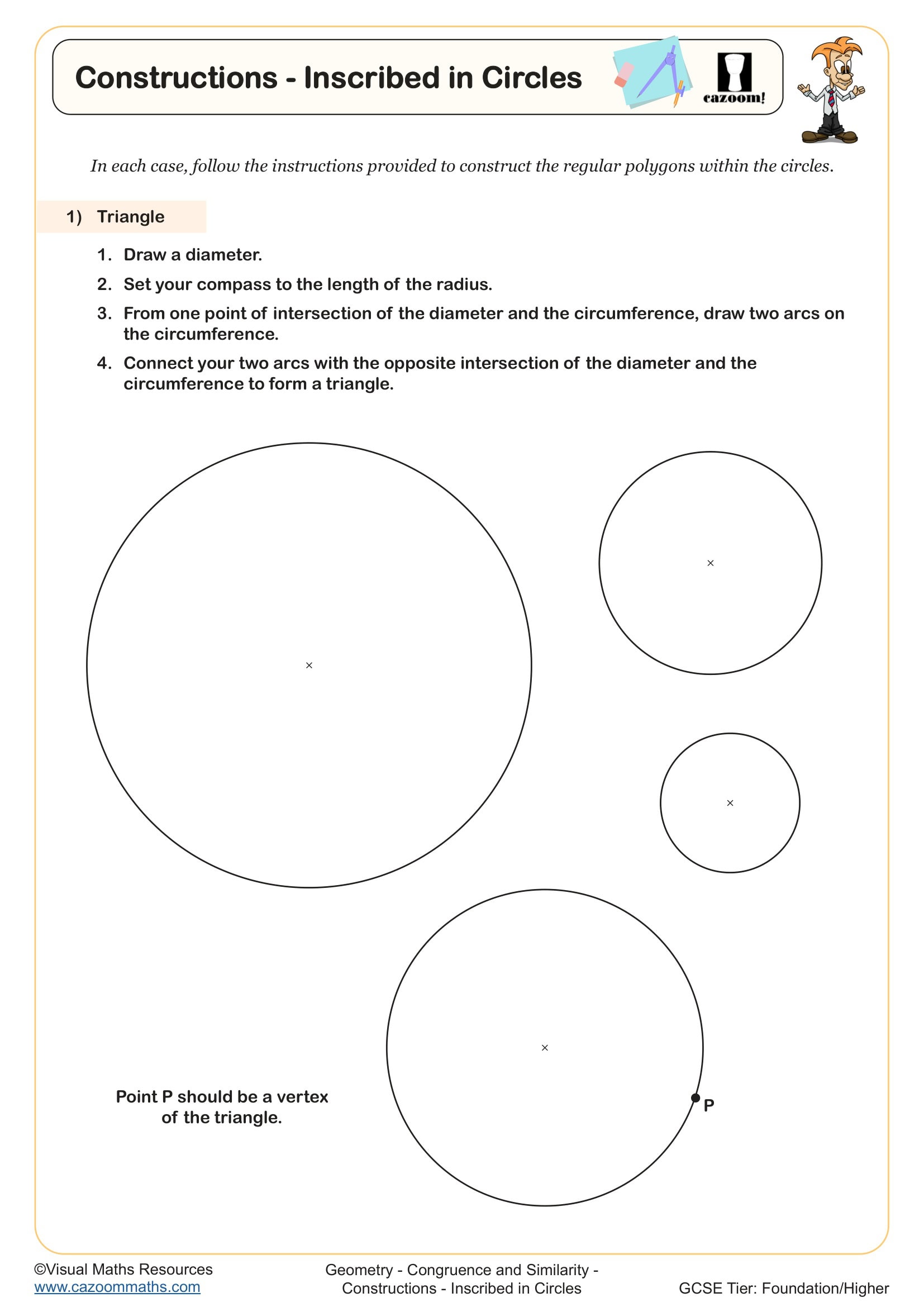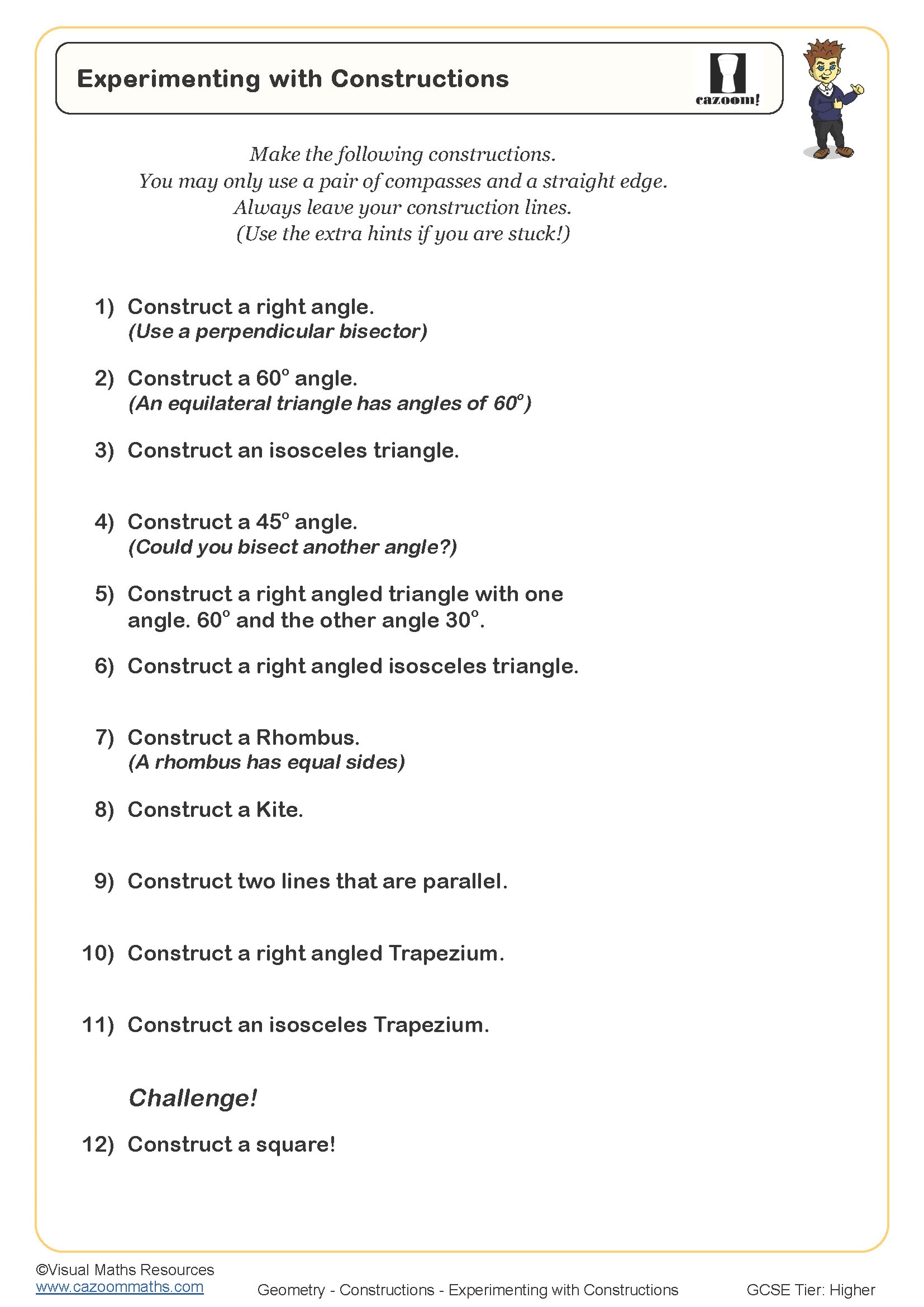Year 8 Construction Worksheets
Why Schools Choose Printable Year 8 Construction Worksheets Over Other Resources
Year 8 construction work represents a fundamental transition from basic measurement and drawing skills to exact geometric construction techniques. Students move from basic shape identification to grasping the mathematical relationships which define these shapes. The hands-on activities help students develop spatial awareness and demonstrate mathematical proof through tangible examples. The structured sequence of advanced construction activities develops logical thinking abilities, which later apply to algebraic problem-solving and algebraic reasoning. The physical process of creating perpendicular bisectors and angle divisions enables students to learn geometric properties better than passive observation methods.
Specific learning benefits include:
• Learn compass and straightedge techniques
• Develops geometric reasoning skills
• Strengthens understanding of angle relationships
• Builds foundations for formal proof
• Improves fine motor control
• Connects algebra to geometric concepts
• Enhances visualisation abilities
Cazoom Maths Worksheets: Complete Topic Coverage at a Glance
These worksheets scaffold learning from basic compass skills to complex geometric constructions. Starting with fundamental techniques, students progress through challenges that require multiple construction steps. Clear visual guides accompany each problem, demonstrating the precise sequence of actions needed. The careful progression ensures students master prerequisite skills before tackling more demanding constructions, with each topic building naturally on previous learning.
The core skills covered include:
• Constructing Triangles
• Constructing Perpendicular and Angle Bisectors
• Constructions – Inscribed in Circles
• Experimenting with Constructions
Why Parents and Teachers Trust KS3 Construction Worksheets for Homework Support
The combination of theoretical knowledge and practical abilities in construction presents a challenge that many textbooks fail to present effectively. The worksheets establish a connection between theory and practice through their differentiated tasks, which support students of different abilities in one classroom. Students who need help with bisectors can start with a basic one, but advanced learners can work on complex loci problems at the same time. The detailed answer sheets containing every construction arc and line serve teachers well because they simplify the marking process while allowing students to assess their work independently. The step-by-step solutions expose the mathematical logic which supports each construction process, so students understand that these procedures represent logical applications of geometric principles. The clear explanations reduce instructional time while promoting authentic comprehension development. The uniform design of all worksheets helps students learn expectations quickly so they can concentrate on mathematical content instead of deciphering instructions.
Connecting Geometric Construction to Real-Life: From Architecture to Sports
Construction skills extend far beyond the mathematics classroom, forming the foundation for numerous practical and professional applications. Understanding how to create precise geometric figures develops the spatial reasoning essential for design and engineering fields.
• Architecture and design – creating floor plans and technical drawings
• Engineering projects – designing components with exact specifications
• Navigation and mapping – plotting routes and triangulating positions
• Art and graphics – creating symmetrical designs and perspective drawings
• DIY and crafts – measuring angles for cutting materials accurately
• Computer game design – understanding coordinate systems and transformations
• Sports field marking – creating precise boundaries and zones
• Packaging design – developing nets for three-dimensional containers



